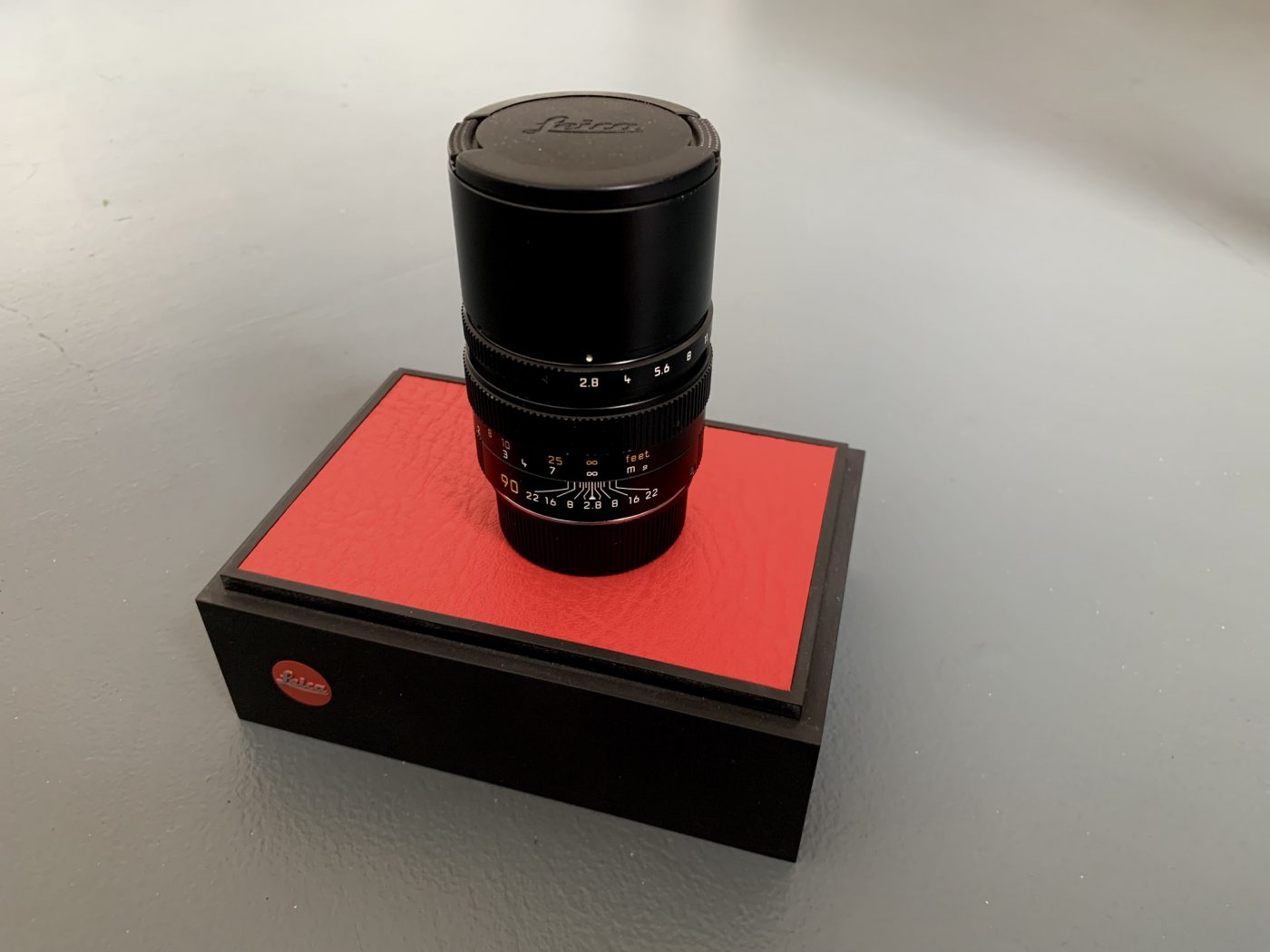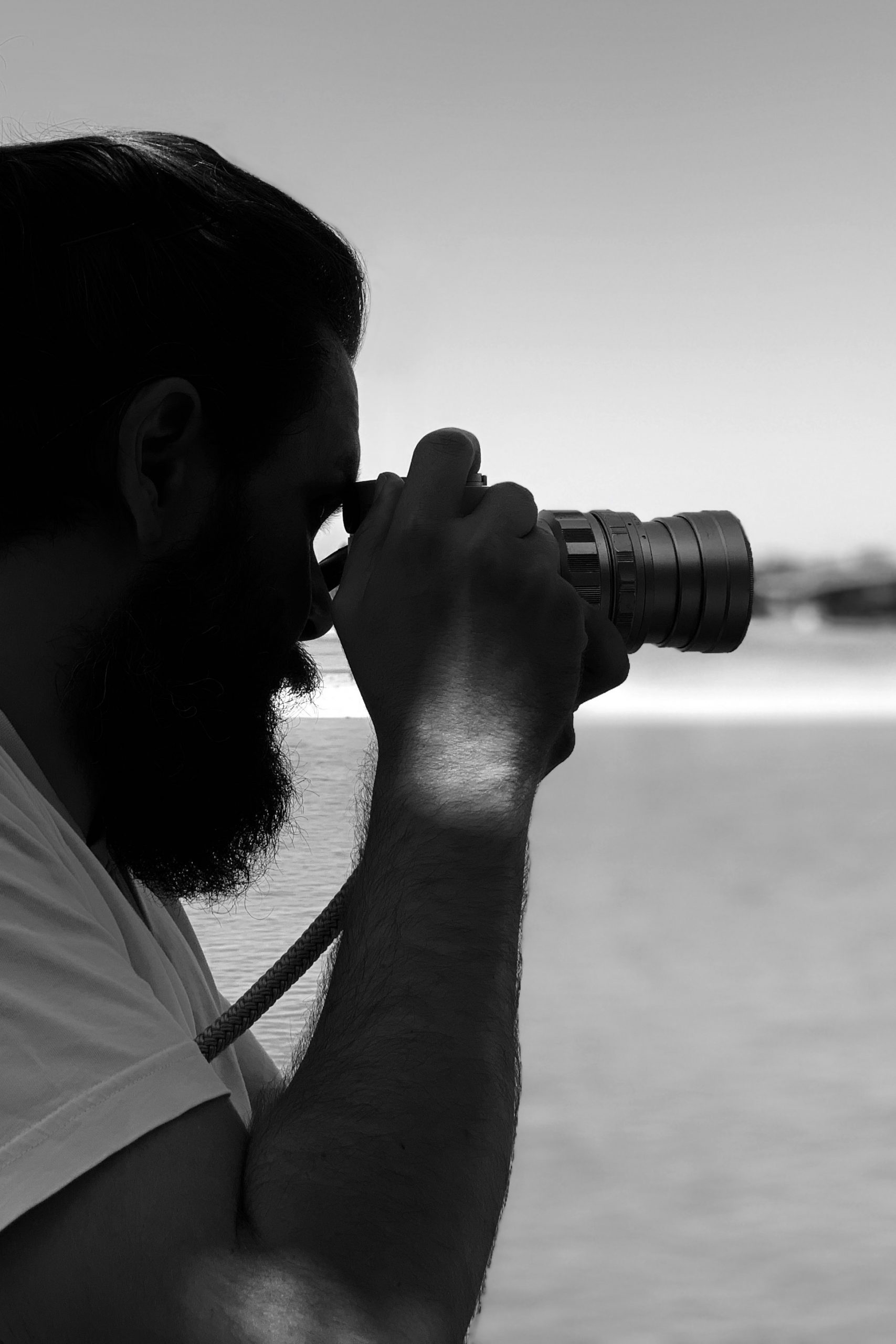LEICA ELMARIT-M 90mm f/2.8 – Losing a Stop and a Burden

After some time with the LEITZ SUMMICRON 90mm f/2 beast from the 1960ies, it was time to shift gears to a more light-weight setup. Even though the lens has been LEICA’s finest high-speed telephoto lens for decades, more recent models are much smaller in size and weight.
As seems clear from the below photo, the SUMMICRON is a monster in the rangefinder dimension. It has excellent build quality and outstanding performance even after 60 years of service. But it is neither stealthy nor comfortable to carry around. Most critically, it also makes handling the camera a bit of a hassle. The setup is really off balance with the bulky glass, not even mentioning the considerable finder blockage. It was time to move on.

LEITZ SUMMICRON 90mm f/2
Lighter and Smaller
The new 90mm telephoto lens for my rangefinder endeavors is the the LEICA ELMARIT-M 90mm f/2.8. Even though it may still seem huge, it is tiny in comparison. It comes in at just 395 g and is 76 mm from flange to tip. The LEITZ SUMMICRON 90mm f/2 weighs 635g and measures 127 mm from flange to tip. All of this may be small in comparison to larger camera systems, but it is certainly an improvement.
The LEICA ELMARIT-M 90mm f/2.8 was produced from 1990-2008. It is described as optically perfect, ultra-sharp even wide open with no distortions and might be the only LEICA telephoto lens you might ever need, according to Ken Rockwell. Of course the latest LEICA APO-SUMMICRON-M ASPH. 90mm f/2 lens would be superior, faster and more or less the same size and weight. However, the ELMARIT-M is also a much more affordable option.



Using the LEICA ELMARIT-M 90mm f/2.8
As one would expect, it works with any camera in the M system that has an M-mount. It also looks much more appealing on the LEICA M10-P White Edition than its predecessor. Even though I used a silver SUMMICRON, matching the overall design of the camera, I feel quite content with using black lenses.
Using an M-Adapter L, the lens can also be used on L-mount cameras, such as the LEICA SL, SL2 or SL2S. With its amazing EVF and focus peaking capabilities, it is a pure joy to use the lens on LEICA’s mirrorless systems, as it is with any other M lens I tried. Also in comparison to the heavy and bulky – but at the same time outstanding – zoom lenses for the SL system, the camera can become quite a compact and mobile package when using M lenses.
With the SL2 and SL2S there is also IBIS – in body image stabilization. This is a great add-on for the manual focus M lenses. Especially with the low light capabilities of the SL2S and the outstanding high ISO performance, a 2.8 aperture on a 90mm lens is certainly more than enough for anything I am doing these days.



However, my main setup is using it with my rangefinder camera. Up to this day remains to be an exceptionally unique photography experience for me. There is a bit of finder blockage when the hood of the lens is extended. Yet, I consider it not relevant to the way I am shooting. For those looking to the smallest lens available, probably the LEITZ TELE-ELMARIT-M 90mm f/2, produced from 1974 – 1990, might be an alternative. There will be no finder blockage with it.
In comparison to the APO-SUMMICRON-M 90mm f/2, the ELMARIT-M has a super tight depth-of field scale. This is something to navigate, especially with the rangefinder focusing mechanism. This may be a good enough reason for an upgrade one day. However, focussing any 90mm lens at close distances at f/2.8 (or f/2 for that matter) is a challenge due to the optical design.
As Matt Wright eloquently explained:
In my hands, any lens faster than f/4 on a rangefinder may require a focus magnifier if used wide open. Part of the reason is that the depth of field is razor-thin and rangefinders are not the best tool to use to focus with a razor-thin depth of field. In my hands a rangefinder is not quite precise enough to focus down to a razors thickness. The following primer explains the situation using a little math derived from the depth of field calculator.
Notes by Matt Wright on his Minolta M-Rokkor 90mm F/4 Review
1. If you are close focusing at 0.7 meters (27.5 inches) at f/4 and using a 90mm lens your margin of error (e.g. zone of focus) is only 0.5 inches (1.27cm). That is razor-thin but it is even worse if you are using an f/2.8, 90mm lens wide open at close focusing distance. At f/2.8, your margin of error is only 0.35 inches which or 0.889 centimeters!!! As you can see the margin of error is almost nothing with both of these lenses spo unless you are using a digital tool to assist you with focus, it can be impossible to accurately focus a 90mm rangefinder lens, wide open, at f/2.8 using the rangefinder mechanism.
Think about it, if you lean in just 8mm your subject will be out of focus. If your subject moves 8mm it will be out of focus. If your rangefinder focusing is off by 8mm it will be out of focus. If a wasp farts in your general vicinity your image might be out of focus although I am not exactly sure if insects pass gas it will affect your image. In my experience, the rangefinder mechanism is just not accurate enough (with my eyes) to reliably allow you to focus with 8mm of precision. At f/4 you have somewhat of a fighting chance.
2. When it comes to focusing at moderate distances, let’s say a subject is 6 feet away, the situation improves..slightly. Using a 90mm lens at F/4 your margin of error is 3.72 inches (9.5cm). At f/2.8, the margin error is just outside of the stupid range and is 2.64 inches (6.7cm). It is reasonable to expect that even at 6 feet away if your subject is moving or you do like everyone else and get excited and lean in just a little bit before you press the shutter, your subject might be out of focus.
3. At farther subject distances, let’s say 25 feet, this discussion is less of a concern. At f/4 your margin of error is 5.64 feet (1.72 meters) and at f/2.8 the margin of error is 3.97 feet (1.21 meters). In both of those situations, at least in my experience, the rangefinder, even without a magnifier is just fine.
4. As a corollary to this discussion, if you think you need an f/2.8 lens for far focusing because you think you will get more background blur with f/2.8 compared to f/4, think again. The difference in bokeh between f/2.8 and f/4 at 25 feet isn’t all that much different.
So even though I would like to have LEICA APO-SUMMICRON-M ASPH. 90mm f/2 lens as my optimal tele photo lens of choice, using it wide open would be a considerable challenge. At this stage, It does not justifying the investment in comparison to the fine LEICA ELMARIT-M 90mm f/2.8 I opted for. So for the time being, I am compromising on theoretical excellency while largely improving the overall weight and size of my kit. One day, I may upgrade to the 90mm APO, who knows. Until then, while losing a stop, I am certainly also losing a burden to carry.
Related
One Comment
Leave a comment Cancel reply
This site uses Akismet to reduce spam. Learn how your comment data is processed.



[…] can be checked for any issues. In my case, the LEICA M10-P White Edition correctly detects the LEICA ELMARIT-M 90mm f/2.8 lens. So with just 15 minutes of effort, no more worries about correct EXIF meta data written in my […]